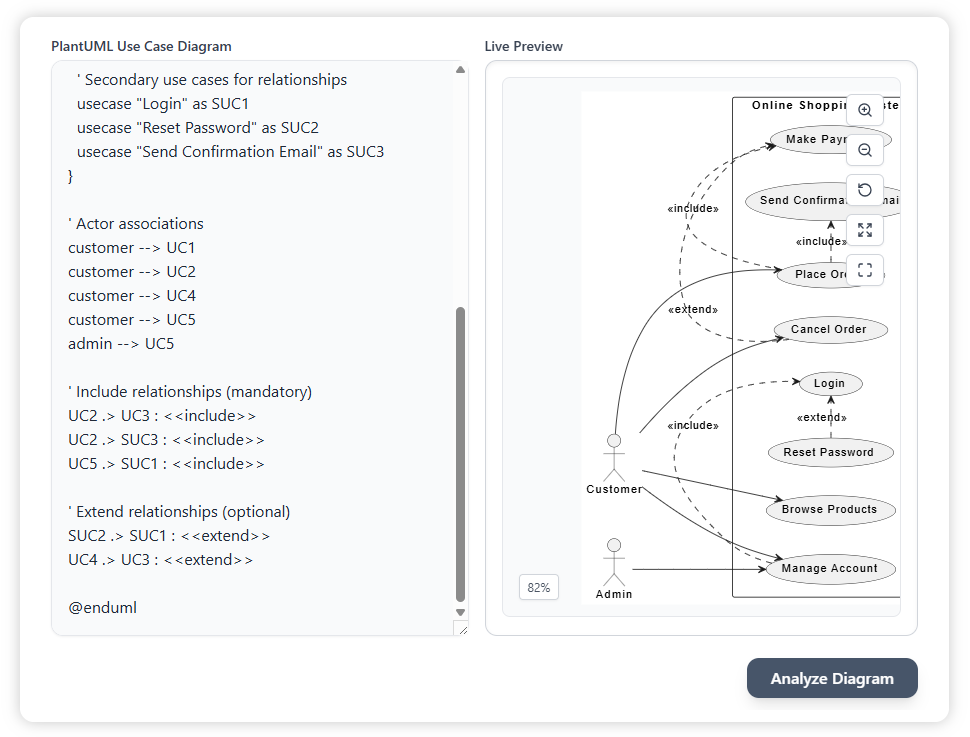Now Reading: From Table to Visuals: Making Use Case Relationships Understandable | Extend and Include Use Case Analyzer
-
01
From Table to Visuals: Making Use Case Relationships Understandable | Extend and Include Use Case Analyzer
From Table to Visuals: Making Use Case Relationships Understandable | Extend and Include Use Case Analyzer
Use case diagrams are powerful, but once <include> and <extend> relationships multiply, the visual layout can quickly get messy. Lines cross over, actors get pushed around, and the diagram becomes harder to interpret. Before trying to make sense of the visuals, it helps to first break down the information into a clear, structured table.
Why a Table First?
A diagram shows the big picture, but a table gives you the details in an organized way. By converting relationships into a table with columns like:
- Base Use Case
- Actors
- <include> Use Cases
- <extend> Use Cases
You get an instant overview of the system logic without fighting through overlapping connectors. For example:

This format makes it easy to answer questions like:
- Who interacts with this use case?
- Which steps are always included?
- Which behaviors are optional or conditional?
Turning Tables Back into Clear Visuals
Once relationships are clear in table form, visualization becomes meaningful again. Instead of seeing a cluttered diagram, you can generate a focused sub-diagram that shows only the relationships for a specific use case.
This way, the diagram is no longer overwhelming—it is a direct visual representation of the structured table you just saw.
How the Extend and Include Use Case Analyzer Bridges the Gap
The Extend and Include Use Case Analyzer is designed exactly for this workflow:
- Analyze the PlantUML code and extract all actors, <include>, and <extend> relationships.
- Generate a relationship table that summarizes the system in a clean, structured format.
- Select a use case and instantly produce a sub-diagram showing its related actors and connections.
By moving from table to visuals, the tool helps you first understand the logic, then see it clearly in a diagram. Instead of relying on PlantUML’s auto-layout alone, you get a guided path from raw text to structured insights.

Why Table Is Important
- For business stakeholders: The table provides a non-technical summary that is easy to read.
- For developers and analysts: The filtered diagrams reveal precise relationships without noise.
- For everyone: The process avoids confusion and saves time interpreting large diagrams.
When relationships are too complex to read directly in a diagram, stepping through a table first ensures that nothing is missed.

